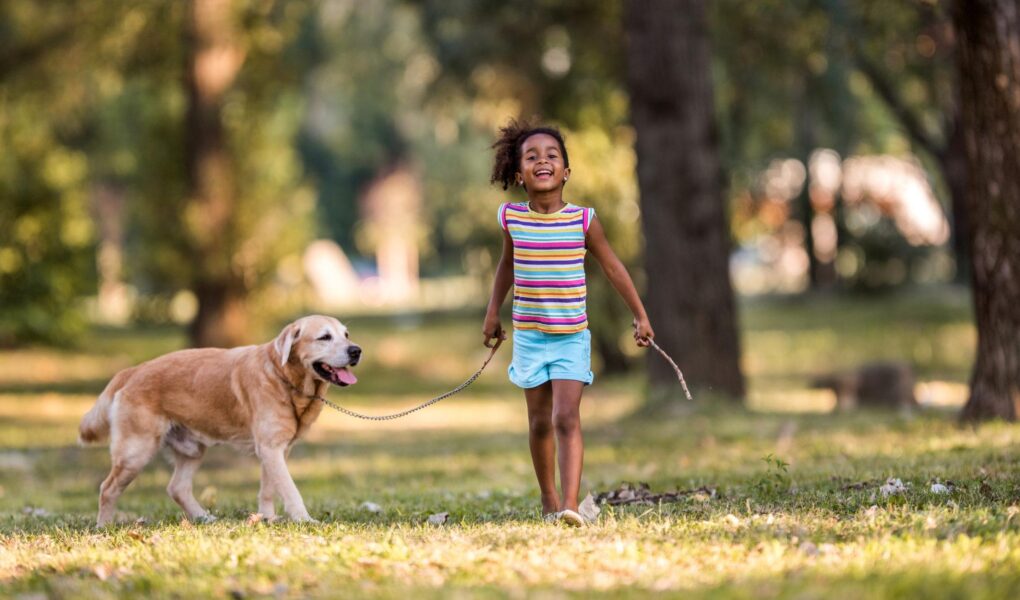Unleashing Potential: The Art of Dog Walking Training
As the sun rises, casting a warm glow over the neighborhood, a familiar sight begins to emerge: the joyous bounding of dogs alongside their owners, tails wagging in harmony with the pace of their steps. For many, walking the dog is a simple yet essential part of daily life, a rhythm that strengthens the bond between human and canine. But beneath the surface of this seemingly casual ritual lies an intricate dance of training, patience, and companionship. Dog walking training is not merely about teaching a dog to heel or sit; it’s about fostering connection, enhancing behavior, and ensuring both the walker and the walked enjoy their time together. In this article, we will explore the importance of dog walking training, the techniques to master it, and the benefits it brings to both pets and their owners, revealing how this practice can transform a daily chore into an enriching experience for all involved.
Table of Contents
- Understanding Your Dogs Behavior During Walks
- Essential Equipment for Effective Dog Walking Training
- Creating a Positive Walking Experience for Your Dog
- Techniques to Reinforce Good Leash Manners
- Q&A
- Key Takeaways
Understanding Your Dogs Behavior During Walks
Understanding your dog’s behavior during walks is crucial for developing a harmonious walking routine. Each dog has its unique personality and instincts, which can manifest in various ways when they are outside. You might notice some common behaviors, such as:
- Sniffing: Dogs experience their world primarily through scent. Sniffing is their way of gathering information, so allow them to explore their surroundings.
- Pulling on the leash: This behavior can indicate excitement or impatience. Remember to train them gradually to walk beside you at a relaxed pace.
- Social interactions: Whether they’re eager to greet other dogs or people, understanding their social behavior can help reinforce positive experiences while out.
Observing these behaviors can also help you identify their comfort levels. For instance, a dog that frequently barks or growls at other dogs may feel anxious or protective. You can work on desensitization techniques to alleviate such anxiety. Here’s a quick reference on *common dog reactions* during walks:
| Behavior | Possible Meaning | Training Tip |
|---|---|---|
| Excitement | Enthusiastic about being outside | Reinforce calm behavior with treats |
| Aggression or barking | Feels threatened or protective | Practice desensitization with controlled exposure |
| Pawing or jumping | Seeking attention | Teach alternate behaviors like sitting |
Essential Equipment for Effective Dog Walking Training
To embark on a successful dog walking training journey, having the right equipment is crucial. Begin with a well-fitted harness that ensures comfort and control, minimizing the risk of injury while allowing for freedom of movement. In addition, opt for a lightweight, durable leash—preferably one that grants you flexibility in adjusting length according to your surroundings. Incorporating treat pouches into your kit will facilitate positive reinforcement and motivate your furry friend to engage during walks. A bark collar can also be a valuable tool if your dog tends to be overly vocal; choose one that utilizes sound or vibration to correct unwanted behavior gently.
Beyond basic walking gear, consider investing in a few additional items to enrich your training experience. A water bottle with an attached bowl will keep your pet hydrated during longer walks, while portable waste bags help maintain cleanliness in public spaces. You might also want to explore clickers and training aids, which can be instrumental in rewarding desirable behaviors. Here’s a simple comparison table to help you understand essential items at a glance:
| Equipment | Function |
|---|---|
| Harness | Provides comfort and control |
| Leash | Allows easy management of dog’s distance |
| Treat Pouch | Makes rewarding your dog quick |
| Bark Collar | Helps manage excessive barking |
| Water Bottle | Keeps your dog hydrated |
| Portable Waste Bags | Ensures cleanliness during walks |
Creating a Positive Walking Experience for Your Dog
Enhancing your dog’s walking experience can greatly improve their behavior and your bonding time. Start by choosing a suitable location for your walks. Be mindful of the environment as it should be calm and safe, free from excessive noise and distractions. A gentle pace can help your dog feel more comfortable. Key aspects to focus on include:
- Timing: Walk during cooler times of the day to keep your dog comfortable.
- Route selection: Pick paths that offer some variety to keep your dog’s interest alive.
- Pace control: Adjust your speed to yours and your dog’s levels of fitness.
Consistency is vital when it comes to training and establishing a routine. Create an interactive experience by incorporating training commands during your walk. Use positive reinforcement to encourage good behavior, rewarding your dog with treats, praise, or playtime when they respond correctly. Here are some training commands to incorporate:
| Command | Purpose |
|---|---|
| Heel | Encourages your dog to walk beside you calmly. |
| Come | Reinforces recall and helps keep your pup safe. |
| Sit | Promotes patience, especially at corners or busy intersections. |
Techniques to Reinforce Good Leash Manners
Establishing good leash manners is essential for enjoyable dog walking experiences. Start by using positive reinforcement techniques to encourage desired behaviors. When your dog walks calmly by your side, reward them with treats or praise. This builds a positive association with walking on a leash. Incorporating commands like “heel” or “let’s go” can also guide them through their walking routine. If they pull ahead, stop walking and wait until the leash relaxes before continuing. This teaches them that pulling will not get them where they want to go.
In addition to positive reinforcement, consistency is key. Set aside specific times for leash training sessions, ensuring that both you and your dog are focused. During these sessions, practice walking in a variety of environments to expose your dog to different distractions. Use the following strategies to further enhance your walking experience:
- Incorporate short training games during walks, such as frequent stops or directional changes.
- Use a comfortable and well-fitted harness to reduce pulling and make the experience enjoyable.
- Gradually increase the distance and duration of your walks as your dog’s leash manners improve.
Q&A
Q&A: Everything You Need to Know About Dog Walking Training
Q: Why is dog walking training important?
A: Dog walking training is crucial for fostering a harmonious relationship between you and your furry friend. It teaches your dog to walk politely on a leash without pulling, jumping, or becoming overly distracted. This not only makes walks more enjoyable but also enhances your pet’s safety and your comfort while out and about.
Q: When should I start training my dog to walk on a leash?
A: The best time to start leash training is when your dog is still a puppy, as they are more receptive to learning new behaviors. However, older dogs can also learn to walk nicely on a leash. The key is patience and consistency, regardless of your dog’s age.
Q: What tools do I need for effective leash training?
A: To get started, you’ll need a few essentials: a well-fitted collar or harness, a sturdy leash (about 4 to 6 feet long is ideal), and plenty of treats to reward your dog. Consider using a clicker if you prefer clicker training, as it helps reinforce good behavior.
Q: How do I prevent my dog from pulling while walking?
A: One effective method to curb pulling is to practice “stop and go.” Whenever your dog starts to pull, stop walking. Wait until they return to your side or look back at you, then resume walking. This teaches them that pulling leads to a halt in progress, while walking nicely gets the walk moving again. Consistency is key!
Q: How can I make walks more engaging for my dog during training?
A: To keep your dog engaged, vary your walking routes and incorporate fun elements into your training sessions. Allow them to explore interesting smells, bring along a toy, or practice commands like “sit” or “stay” at intervals. This creates a stimulating environment where your dog feels rewarded for good behavior.
Q: What common mistakes should I avoid during training?
A: A few common pitfalls include using the wrong equipment, being inconsistent with commands or rewards, and failing to manage distractions. Be sure to use the appropriate training gear, remain patient, and gradually introduce distractions at a pace your dog can handle.
Q: How long should I train my dog for each session?
A: Keep training sessions short and sweet, ideally between 5 to 15 minutes, especially for younger dogs with shorter attention spans. The key is to create positive associations with walking, so ending on a high note with lots of praise and treats can encourage your dog to look forward to the next session.
Q: What if my dog seems disinterested in training?
A: If your dog seems disinterested or resistant, it might be time to reassess your training approach. Try to make sessions more engaging by combining training with playtime or adjusting the environment to minimize distractions. Remember that each dog is unique, so flexibility in your methods is essential.
Q: How can I reinforce good walking habits after training?
A: Reinforcement is vital! Continue to reward your dog with treats, praise, or playtime whenever they walk nicely on a leash. Regularly practice and refine their skills, taking walks together as a special bonding experience and an opportunity to reinforce those behaviors.
By understanding the nuances of dog walking training, you can create a more enjoyable experience for both you and your pup. With patience, consistency, and positive reinforcement, your dog will soon become a well-mannered walking companion!
Key Takeaways
As we conclude our journey through the essential elements of dog walking training, it’s clear that the bond between you and your furry companion can be strengthened with patience, consistency, and a touch of creativity. Every wag of a tail and every enthusiastic leap speaks to the joy that a well-trained dog can bring into your life. Whether you’re navigating the bustling streets of a city or meandering through serene parks, the skills acquired through training will not only enhance the experience for you both but also foster a sense of harmony within the community. Remember, the path to successful dog walking is a shared adventure—one filled with learning, growth, and plenty of tail-wagging moments. So lace up those walking shoes, grab the leash, and step out into the world with confidence, knowing that each walk is an opportunity to create lasting memories with your beloved canine. Happy walking!



